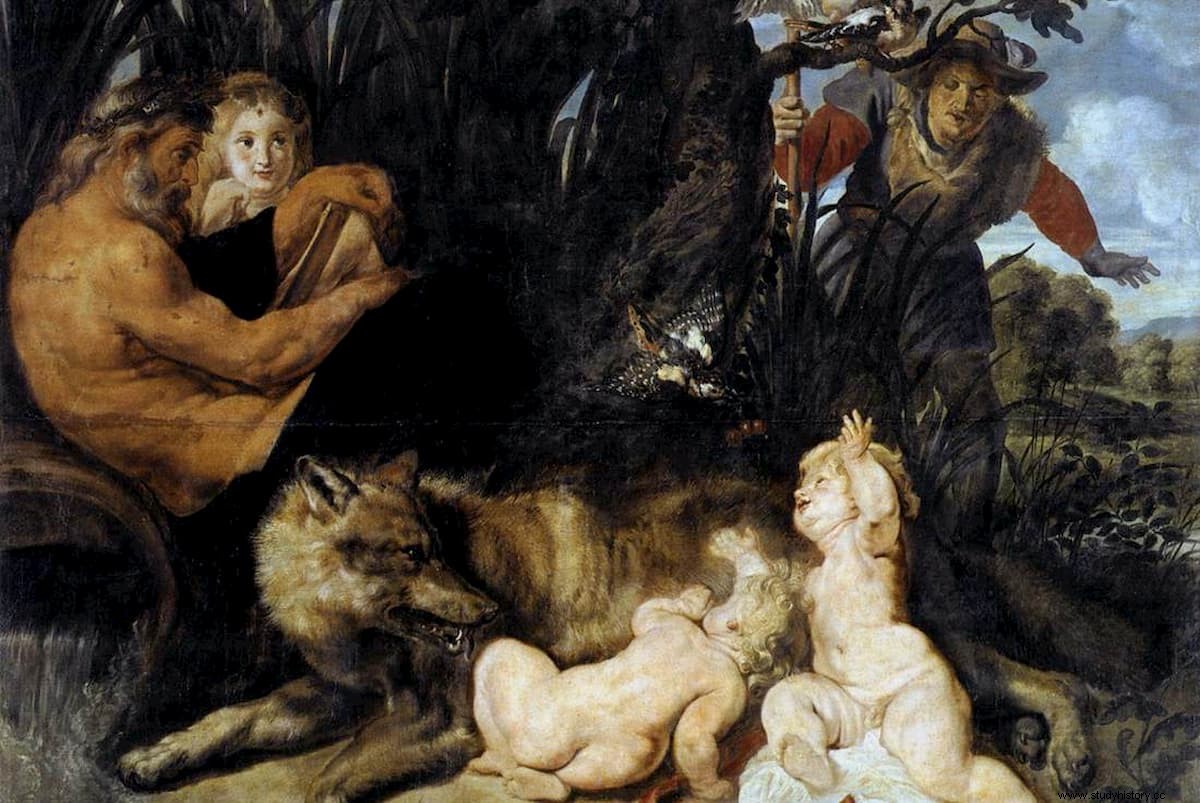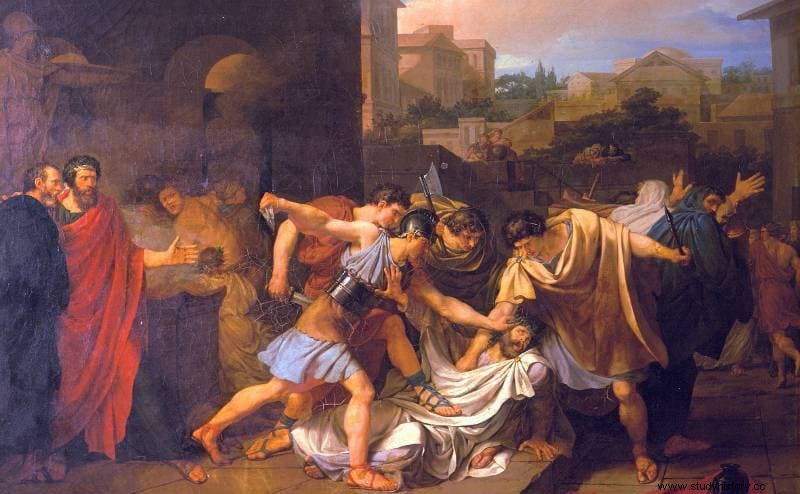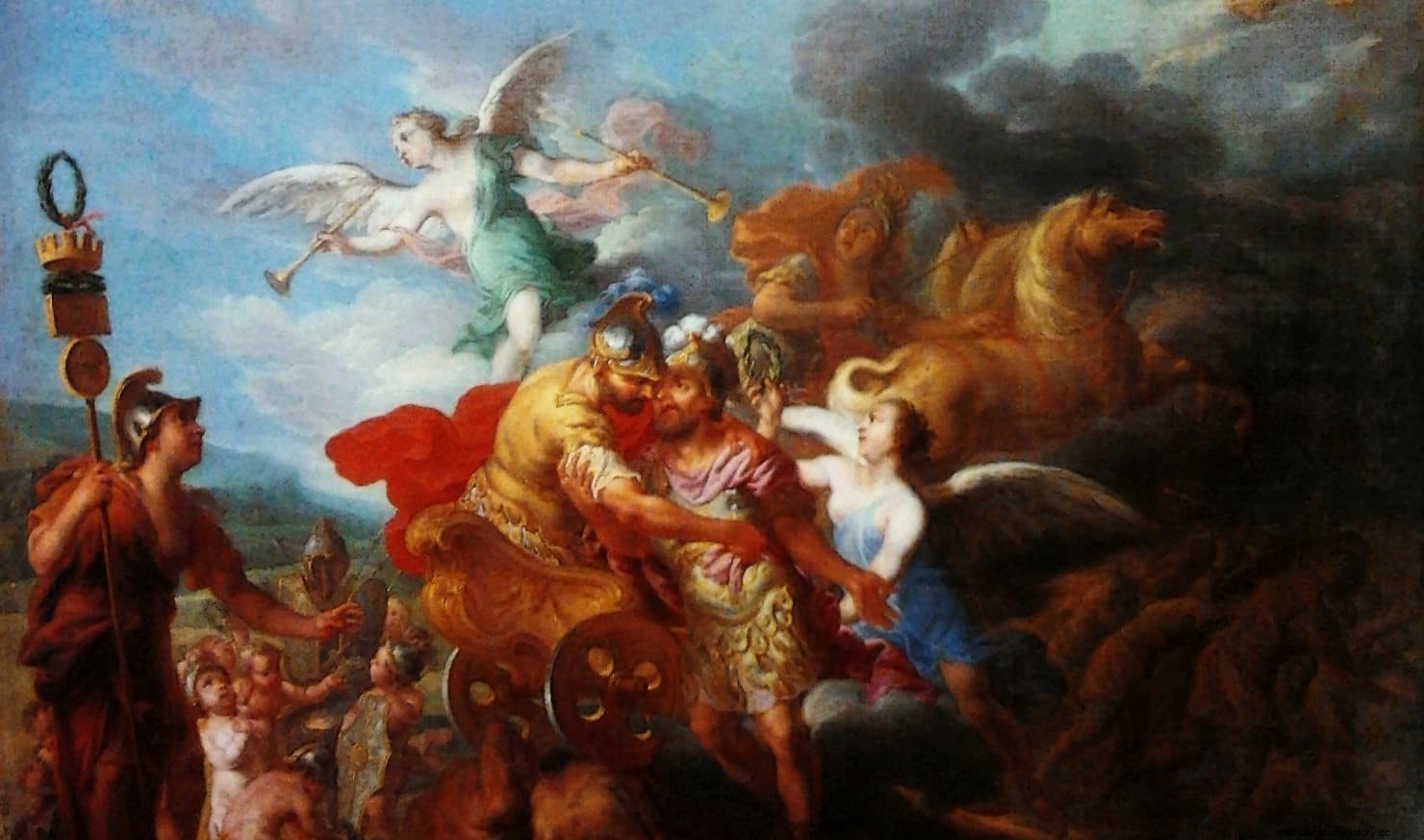If all nations have foundational myths that constitute their foundations, even though they are often as much or more fantasy than reality, ancient Rome was so prodigal in them that it is very difficult to know where history ends and where legend begins. . In this sense, Romulus, its mythical founder, starred in two famous episodes in the 8th century BC:the rivalry with his brother Remus and the kidnapping of the Sabine women. In the latter he had as an antagonist another no less ethereal character with whom he would ultimately form a diarchy. His name was Tito Tacio.
Romulus had more than survived his famous childhood abandonment by his brother Remus. In reality there are dozens of versions that exist about it, some contradictory, although the most widespread is that of Tito Livio, according to which both were sons of Rea Silva, a woman from Alba Longa who, dissatisfied with the obligation of being a priestess imposed by his uncle Amulio when ascending the throne to the detriment of his father, Numitor, became pregnant.
Although he attributed paternity to the god Mars, the monarch was not satisfied and ordered his servants to throw the babies into the Tiber; taking pity, they did not and instead left them in the forest, where they were suckled by a she-wolf.

As the Latin word for she-wolf is lupa and that is how prostitutes were also colloquially called, the possibility has been raised that the children ended up being found and picked up by a woman of that trade. In any case, they grew up, restored the throne to their grandfather, and then set out to found their own city. Unfortunately, they inherited the rivalry of their relatives and, disagreeing on the place to build the city (Romulus wanted the Palatine and Remus the Aventine), the thing ended in historical - that is to say - fratricide.
It has its ironic point that the newly created Rome was populated with what was then described as rabble :escaped slaves, fugitive criminals, exiles, people without resources looking for a life... In any case, few women to support a population and, taking into account that the surrounding towns were reluctant to establish ties with such unattractive neighbors, Rómulo had to resort to drastic measures. He then organized a great party in honor of Neptune, to which he invited all the surrounding towns. Among them were the Sabines and the Latins, who came with their families to find the unpleasant surprise that, in full celebration, the young Romans pounced on their women, kidnapping them and expelling the men.

It is not known how many there were, although there are those who have bothered to make calculations with variable results (between thirty and more than half a thousand). The important thing is that this was going to be the first generation of married couples in Rome, which Tito Livio justifies by assuring that only single women were kidnapped with the idea of establishing the conubium (mixed marriage between spouses of different origins) and because the Romans had been denied the possibility of doing things legally. Other authors, such as Salustio, believe that the real objective was to provoke a war that would allow expansion. If so, they got it.
The justificatory arguments given by the chroniclers are not enough to mask that this action was an offense that was also doomed to culminate in rape, no matter how much it is claimed that the Romans convinced women of their intentions to form families (it is even argued that they they accepted putting as conditions not to do more domestic work than to weave on the loom and to be the ones who would rule in the home environment). Because, obviously, their peoples were not willing to sit idly by.

The Latins were defeated with some ease, but with the Sabines things turned out very differently. That is where the figure of Tito Tacio emerges, of whom we hardly know anything before other than that he was the king of Sabinia and was willing to avenge the outraged honor. As explained by Dionysius of Halicarnassus, Tatius, who would be a native of Cures (a Sabine city located forty-two kilometers from Rome and seat of the royal court), spent a whole year carefully preparing the campaign. Then it was the weapons that spoke and, after a series of skirmishes, the balance began to tip in their favor.
Two victorious battles allowed the Sabine army to stand before the gates of the Capitol. According to another myth, a young Etruscan named Tarpeia opened the way for them, in exchange for what the warriors carried in their arms, an allusion to the gold bracelets that the Sabines later reinterpreted, contemptuously, as their shields, crushing her with them.
In memory of that incident, the place where it happened was called Tarpeya rock, being there where the traitors would be executed in the future. The fact is that the invaders had a clear path to take the city, but they could not and everything was doomed to a new clash the next day.
This reached such a dose of virulence that the unthinkable happened. The Sabine women, dressed in mourning, intervened between the two contenders claiming that they could lose their current husbands if one side won, but also their fathers and brothers if the other did. The reasonableness of the argument led the Romans and Sabines to make peace and establish a diarchy, in which Romulus and Titus Tacio shared power. Together they undertook the conquest of Cameria, a city in Lazio from which incursions into the Roman domains used to be made and which had ignored the demand to hand over those responsible or compensate for the damage caused.
Once taken, a third of its territory was plundered to install settlers in it, although they would be harassed later by the natives, causing a second and definitive intervention. The entire Cameria became a Roman colony and its four thousand inhabitants were sent to the metropolis, dividing it up among the thirty curiae. In this way, Rome grew in area and population. That double-headed monarchy functioned for five years, also sealed by marriage:a daughter of Tacio, Hersilia, was given as wife to Romulus; another, Tacia, to Numa Pompilius, who was a Sabine and would later be elected king. But in the sixth year, in 745 BC, trouble came.

Some Laurentians were harassed by supporters of Tacio and when ambassadors from Laurentia arrived to request the delivery of those responsible, there was a disagreement between the monarchs:Rómulo was willing to do so, but his counterpart not only refused but shortly after, his own they attacked the diplomats themselves, forcing them to flee. Before the arrival of a new embassy, Rómulo ordered the arrest of those responsible to hand them over to him... and Tacio tried to free them because among them there was a relative of his. It is not known exactly if he succeeded, but the tension reached such a point that the Sabine monarch died during the celebration of a religious service in Lavinio.
It is unknown if he was cunningly murdered or simply lynched for going without the inmates and asking for his freedom; It must be taken into account that both Laurentia and Lavinium were cities in Latium and, therefore, rivals of Rome. However, it is also unclear whether those responsible were Latinos or his own citizens, who stoned him for disobeying the order of the Senate and his partner. Rómulo decided not to persecute the culprits to compensate for the previous events, but granted the deceased a state funeral.
An epidemic that was interpreted as a punishment from the gods, for not doing justice to the crime, devastated the Roman and Laurentian populations while the camerios took the opportunity to revolt. But Romulus was able to overcome all obstacles and remained as sole sovereign. Both the Romans and the Sabines continued their coexistence under the common denomination of quirites , as we saw in an article on the subject (although the respective cities kept their real names). Under this unitary policy, they continued to expand at the expense of the Etruscans until the monarch, who became despotic, was also assassinated around 716 BC

How far does the historicity of Tito Tacio go? Today it is considered that he probably did not exist as such. In fact, he is not traditionally included in the list of the seven kings of Rome, which begins with Romulus and continues with his son-in-law, the aforementioned Numa Pompilius. Remo's brother also accumulates mythological elements despite the fact that the veracity of his relics, which the Romans preserved for a long time (the trunk that prevented him from being swept away by the river, the cave where the she-wolf suckled him, the hut where he lived …), were questioned almost from the beginning. That according to one version he ascended to heaven alive is nothing more than a euphemistic way of explaining that the senators killed and tore him to pieces, making his remains disappear.
Something similar happens with Tacio, whom historians attribute to being an eponym of the Titii vel titienses that is, the flavial priests, the clergy created by Tacio -or by Romulus in his honor- in charge of making the ancestral Sabine cults survive before they were absorbed in republican times (Augustus revived them and baptized that religious hierarchy as Sodales Titii ). Or perhaps it was a way of metaphorizing the beginnings of one of the later magistracies of the Roman system, the consulate, which was dual. Another theory is that he was the first true king, replaced later in the narrative tradition. And it is that, as we said, few nations had as many myths as ancient Rome.
